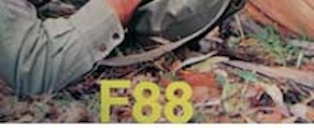The Pattern 1913 Enfield (P13) was an experimental rifle developed by the British Army ordnance department serve as a replacement for the Short Magazine Lee-Enfield (SMLE). Although a completely different design from the Lee-Enfield, the Pattern 1913 rifle was designed by the Enfield engineers. In 1910, the British War Office considered replacing the SMLE based on its inferior performance compared to the Mauser rifles used by the enemy in the Boer War. The major shortcoming was long range performance and accuracy due to the ballistics of the .303 round, but the bolt system of the SMLE was not believed to have the strength to chamber more potent ammunition. A rimless .276 cartridge, which was comparable to the 7 mm Mauser, was developed.
History
During the Second Boer War the British Army had been faced with forces equipped with the Mauser Model 1895, in 7 x 57 mm caliber. This smaller, high-velocity round prompted the War Office to develop their own "magnum" round in 1910, using a .276 calibre rimless cartridge patterned after that of the Canadian Ross rifle.[citation needed] In August 1910 the Small Arms Committee, which had been responsible for the adoption of the Short Magazine Lee Enfield, was asked by the Director of Artillery to produce a new specifaction for a service rifle. The main changes called for a Mauser-style action and a one piece stock (a cheaper and more serviceable option).[1] In response Birmingham Small Arms (BSA) submitted a design chambered for a rimless high-velocity cartridge. In 1911 the Royal Small Arms Factory (RSAF) at Enfield, the British Government's design and production facility, produced a modified Mauser-pattern rifle for a similar cartridge, the .276. This rifle was presented to the Small Arms Committee on 3 April 1911 by the Assistant Superintendent Carnegie, and the Chief Designer Reavill.
Initially the RSAF designed the new rifle, at this point the Pattern 1911, aoround two calibres; the .276 and the .256. The .256 was found to be inaccurate and the .276 was adopted in mid-1911 for further testing. Problems with pressure resulting from the high velocity round led to the cartridge being redesigned. Numerous changes to the rifle and the cartridge led to eleven Pattern 1911 and Pattern 1912 rifles being manufactured. At the end of 1912 it was decided to put the latest incarnation of the design into limited production for troop trials in 1913 and 1,000 were ordered from RSAF. By the end of 1912 508 had been completed, and by the end of January 1913 1,251 had been manufactured. The rifle was distributed to the army as the Rifle, Magazine, Enfield, .276-inch. The trials took place in Britain, Ireland, Egypt and South Africa and at the end the Chief Inspector of Small Arms recommended a number of changes, which resulted in a quantity of 6 improved Pattern 1913 rifles being manufactured between March and April 1914. The outbreak of World War I led to the abandonment of the effort to introduce a smaller caliber rimless cartridge for purely practical reasons. Adapting the same rifle (with largely cosmetic alterations aside from chamber and extractor redesign) to fire the standard .303 British round led to the Pattern 14 Rifle (P'14), a competent design fed from a five-round internal magazine. Effective mass production in Britain during WWI was impossible, and so the P'14 became a de facto afterthought. Thus the SMLE remained the standard British rifle during WWI and beyond.
The lack of industrial capacity led the British government to contract with US commercial arms manufacturers: Winchester Repeating Arms Company, Remington Arms and Eddystone (a non-governmental arms manufacturer owned by Remington Arms) who produced the P'14 in .303 for the British Army before the United States entered the war in 1917. When the US entered the war, the P'14 was modified and standardized by the US Ordnance Department and went into production at the same factories as had produced the P'14, production of that rifle having ceased, as the Model of 1917, commonly M1917 Enfield, chambered for the standard US 30-06 cartridge and enjoyed some success as a complement for the Springfield M1903 rifles which were America's official standard issue, soon far surpassing the Springfield in total production and breadth of issue.
Some P'13s survived as target rifles in the UK, often having been "sporterized" (removal of wooden handguards and shortening of the stock). Very few were produced, and so very few survive.
Service history
Used by UK
Wars Did not enter service
Production history
Designed 1912
Number built 1257
Variants Pattern 1914, Model of 1917(US)
Specifications
Weight 8 pounds 11 ounces (3.9 kg) (Empty)
Length 3 feet 10.3 inches (1.2 m)
Cartridge .276 inch (7.0 mm)
Caliber .276 inch (7.0 mm)
Action Modified Mauser turn bolt
Rate of fire Manual, as determined by skill of operator
Muzzle velocity 2,785 feet per second (848.9 m/s)
Feed system 5 round, clip fed reloading





